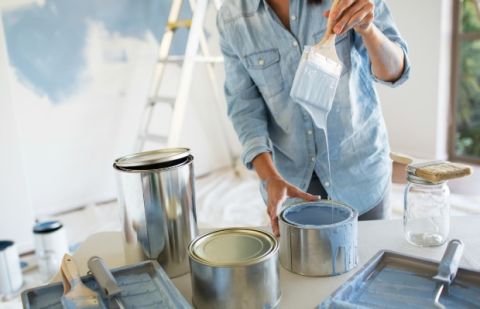It’s time to go
I'm looking at the computer screen as I fill another Zillow Employee satisfaction survey. I forget the exact question. Something related to what can be done to make Zillow do to make the place a better place to work. Or maybe it was about how we can hire better.
Regardless, the answer in my mind is obvious.
In addition to Grace Hooper and SHPE, we need to go to NSBE.
You can Google “National Society of Black Engineers” and find their mission statement and promotion materials. Every year NSBE has a national convention. Most people go to NSBE’s nation convention for one of 3 reasons:
- To become a professional engineer.
- To get hired as an engineer.
- To recruit engineers.
I had already been to NSBE for the first reason. Now I was ready to take Zillow there for the third.
A chance to compete
Months later, I board the plane to Kansas City, MO. My flight itinerary says that the plane will land at March 29, 2017 10:53pm but emotionally I feel like I’m flying into past.
The reason why I had told Zillow to go to NSBE was admittedly personal. There is little doubt in my mind that if it weren’t for NSBE and organizations like it, I would not be in tech.
I think back to 2008. I was strapped for cash. I didn’t want another telemarketing job next year. Sadly, landing a paid internship was proving impossible. I wasn’t having trouble passing my on-site interviews -- I wasn’t even getting to the phone screen. It was frustrating. I wasn’t looking for someone to hand me a job. The problem was that at every turn I was denied a chance to compete.
Luckily for me, I was living in Stanford’s Ujamaa dorm – the de facto home of Stanford’s Society of Black Scientist and Engineers (SBSE). With them I went to my first NSBE convention. For the first time recruiters weren’t giving me the run around. The same high-profile tech companies that at other career fairs threw out my resume were now calling me back. Through NSBE I got my first internship with Amazon. I would work for Amazon before switching to Zillow in 2014.
In 2017 I’m headed to a convention with 12,000 engineers to recruit for Zillow Group. But I, like so many others, am headed to NSBE for bigger reasons.
The bigness
Day 1. Around 11:45am, we hear NSBE members chanting. The floodgates open and thousands of engineers pour onto the career fair floor.
I take an 8-minute video of the convention floor in a futile attempt to convey its bigness. Some of the booths have TVs, VR headsets and trucks. Other booths are down right peacocking. A machine with a tesla coil contraption periodically plays 8-bit nerd-pop songs.
Word begins to spread that Zillow Group is at NSBE. A steady stream of Zillow and Trulia customers come by to tell us how much they love us. They are shocked to discover that this is our first time at NSBE. They encourage us to come next year.
On day 1 we collected 100+ resumes. We didn’t need the extra encouragement.
The light stuff; the heavy stuff
After being on the convention floor for 7 hours the Zillow Group recruiters have 1 thing on the mind: our 7 o’clock dinner reservation. We’re in Kansas City. We can’t leave without getting some Kansas City BBQ.
Along the way we pick up a couple of +1s and head for dinner. The surprisingly good wine and unsurprisingly great BBQ start to flow. My linguistic transformation from West Coast Nerd Speak to Academic African-American vernacular is complete.
We talk about the light stuff: golf, wine, that crazy tesla coil machine.
We talk about the heavy stuff. One of our +1s tells us his story. He went to a high school that’s most advanced math class was Algebra 2. In spite being set up for failure, he got a exemplary score on his SAT, graduated from West Point, and spent multiple tours in Afghanistan and Iraq. His story, like the stories of my extended family members and friends, reminds me just how integral education is to social-economic upward mobility. I can only imagine how many people on that career fair floor came from failing schools in neighborhoods left behind by the powers-that-be. How many came from countries far away in search of the American Dream. How many came from good homes and want to keep that winning streak going.
On day 2, I meet more recruiters and educators. Our goals were surprising similar. We might be at the national convention to recruit engineers, but we are at NSBE to do what others did for us and what others should have done for those whom were left behind.
I’m reminded that my first college dorm was named after the 4th Kwanzaa principle: “Cooperative Economics”. For the first time, I really come to grok what that Swahili word really means. What we are doing at NSBE is not charity. It’s better than that; it’s social-economic upward mobility; it’s Ujamaa.
The bigger reason
By convention’s end, all the Zillow Group recruiters have come to same conclusion: we have to come back next year. We have a couple hundred resumes in digital hand. We’ve blasted that Zillow is hiring to thousands of people. Thanks to our swag and politicking, a large group of 20-somethings have Zillow on the mind.
The next day, I’m back Seattle. It feels pretty surreal.
I went to a convention with 12,000 engineers to recruit for Zillow Group. But I also headed to NSBE for a bigger reason.
- Many go to NSBE to become professional engineers.
- Many more go to get hired as engineers.
- Some go to recruit engineers.
But I, like so many others, go to NSBE to pay it forward.
About the author
Jasmine Mann is a Senior Software Development Engineer at Zillow. Learn more about Jasmine on our
Engineering Blog and on her
LinkedIn.











